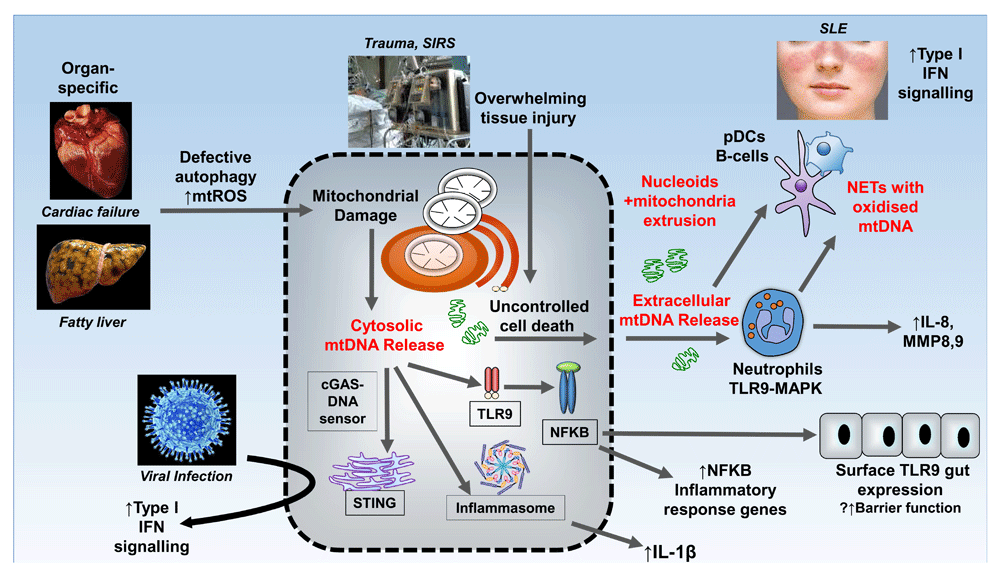Authors: Davide Scozzi,1Marlene Cano,2Lina Ma,2Dequan Zhou,1Ji Hong Zhu,1Jane A. O’Halloran,3Charles Goss,4Adriana M. Rauseo,3Zhiyi Liu,1Sanjaya K. Sahu,2Valentina Peritore,5Monica Rocco,6Alberto Ricci,7Rachele Amodeo,8Laura Aimati,8Mohsen Ibrahim,1,5Ramsey Hachem,2Daniel Kreisel,1Philip A. Mudd,9Hrishikesh S. Kulkarni,2,10 and Andrew E. Gelman1,11
Abstract
Background
Mitochondrial DNA (MT-DNA) are intrinsically inflammatory nucleic acids released by damaged solid organs. Whether circulating cell-free MT-DNA quantitation could be used to predict the risk of poor COVID-19 outcomes remains undetermined.
Methods
We measured circulating MT-DNA levels in prospectively collected, cell-free plasma samples from 97 subjects with COVID-19 at hospital presentation. Our primary outcome was mortality. Intensive care unit (ICU) admission, intubation, vasopressor, and renal replacement therapy requirements were secondary outcomes. Multivariate regression analysis determined whether MT-DNA levels were independent of other reported COVID-19 risk factors. Receiver operating characteristic and area under the curve assessments were used to compare MT-DNA levels with established and emerging inflammatory markers of COVID-19.
Results
Circulating MT-DNA levels were highly elevated in patients who eventually died or required ICU admission, intubation, vasopressor use, or renal replacement therapy. Multivariate regression revealed that high circulating MT-DNA was an independent risk factor for these outcomes after adjusting for age, sex, and comorbidities. We also found that circulating MT-DNA levels had a similar or superior area under the curve when compared against clinically established measures of inflammation and emerging markers currently of interest as investigational targets for COVID-19 therapy.
Conclusion
These results show that high circulating MT-DNA levels are a potential early indicator for poor COVID-19 outcomes.
For More Information: https://www.ncbi.nlm.nih.gov/pmc/articles/PMC7934921/
